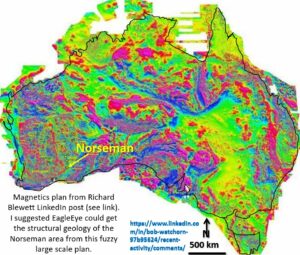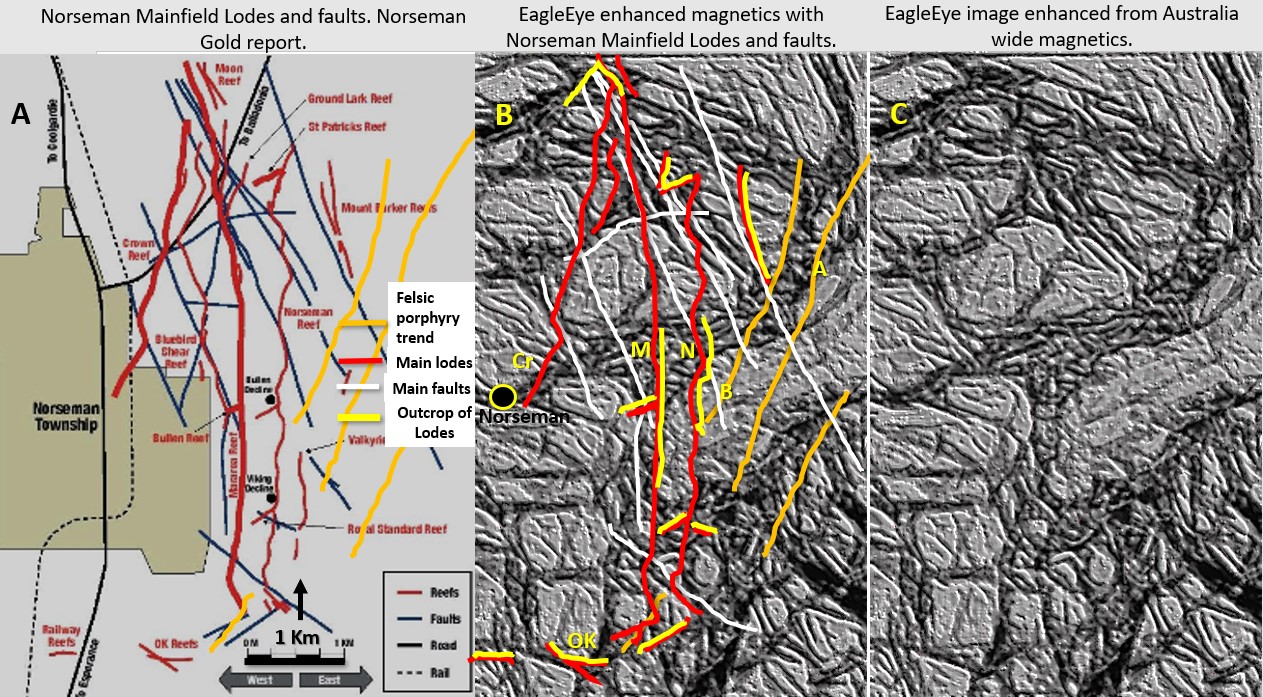Figure 6h. Norseman Mainfield EagleEye magnetics showing lode fault porphyry correlation.
Aim.
To define the Norseman lode system from the EagleEye plan.
Before I commence describing the correlation of the lodes to the geology in the above figure 6h it should be realised that the geology you’re looking at is derived from the Australia wide magnetic image of 216 KB shown below in Figure 1a. This is a magnification of approximately 4,000 times!
That anything resembling Norseman geology shows up astounds me every time I produce such plans. But I have done it many times now which proves the EagleEye system does work.
So if there are arguments as to the exact correlation of lodes and geology, this is the base we are starting from. So far, no-one else can produce these plans. I’m showing several people how to operate EagleEye so that will hopefully change.
Results.
To analyse the structures and lode configuration it is best to compare the left side lode, fault porphyry intrusive plan (A) with the right side EagleEye structural geology plan (C). Then these can be compared with the central plan (B) with these elements overlain on the EagleEye plan.
Structural similarities and correlation of lodes, faults and porphyries.
A. The strongest features are the East to NE dark trends. These correlate well with the EW lodes such as OK (OK), Bullen, Viking, St Patricks and Maloneys reefs (red) up the line of lode and with the NE trending porphyry intrusions (orange) to the east of the field.
B. NNW trends are generally lighter and superimposed on the other geology. These correlate with the important lode defining NNW faults (light blue) such as fault B (B) which defines the northern end of the Mararoa (M) and Crown (Cr) lodes.
C. The NS trend is strong in the south and weaker in the MainField lode area. The north-block to the west between the NS lodes and the NNW faults can be seen in the north central area that it happens in the mines. The Mararoa and Norseman lodes correlate with these NS trending structures. This is good confirmation that the EagleEye plan is relatively accurate at a mine scale.
D. The yellow lines drawn on the lodes is where they outcrop. They outcrop mainly where there is dark structure? Why? This may be an exploration targeting tool?
Conclusion.
The faults, lodes and felsic intrusives follow well defined structures about 80% of the time. So this structural pattern could be used as a template in exploration targeting for Norseman type field.
The lodes were not that clear on the local magnetic survey I saw when I worked on the mine last in 2013. So that is a good result, the 4,000 times enlarged EagleEye plan has perhaps better structural geology lode information than the local magnetics survey!
We will look at the NorthField area next post. The mighty North Royal, the only Norseman mine that made a profit in its own right (calculation by Brian Micke 2013).
Cheers
Bob


